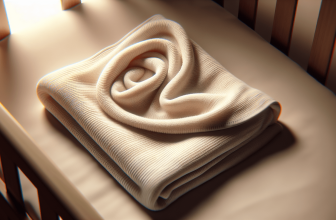Trimming your baby’s nails can be a daunting task, filled with worry and concern about hurting them. But fear not, because this parent’s guide will equip you with all the necessary information and tips to safely trim your baby’s nails. From choosing the right tools to finding the perfect time, this article will guide you in ensuring that your baby’s nails stay neat and well-groomed without any mishaps. So, get ready to gain the confidence and skills to tackle this essential parenting task with ease and peace of mind.
Preparing for the Nail Trimming Process
Gathering the necessary tools
Before you start trimming your baby’s nails, it is important to gather all the necessary tools. Make sure you have a pair of baby-safe nail clippers or scissors, a nail file, and a soft cloth or towel. These tools will help you trim your baby’s nails safely and effectively.
Choosing the right time
Picking the right time to trim your baby’s nails is crucial. It is best to choose a time when your baby is calm and relaxed, such as after a nap or a feeding. Avoid trimming their nails when they are tired or fussy, as it may increase the risk of accidents.
Creating a comfortable environment
Creating a comfortable environment for nail trimming can make the process much easier for both you and your baby. Find a well-lit area with good ventilation, and make sure you have a comfortable surface to sit on. You might also want to have some soothing music or toys nearby to distract your baby and keep them calm during the process.
Understanding Baby’s Nails
Growth and development of baby’s nails
Baby’s nails develop in the womb as early as 16 weeks gestation. The nails are formed by a soft layer of keratin, the same material that makes up hair and skin. It takes several months for the nails to fully harden after birth, so extra care is needed during this time.
Importance of regular nail trimming
Regular nail trimming is important for your baby’s health and comfort. Long nails can lead to scratches and injuries, not only to themselves but also to others around them. By trimming their nails regularly, you can prevent these accidents from happening and ensure your baby’s safety.
Potential risks of long nails in babies
Leaving your baby’s nails long poses several risks. They may accidentally scratch themselves, which can lead to skin infections or irritation. Long nails can also harbor dirt and bacteria, increasing the risk of infections. Additionally, babies tend to explore their surroundings by putting their hands in their mouths, so long nails may increase the risk of them ingesting harmful substances.

This image is property of images.pexels.com.
Step-by-Step Guide to Safely Trim Baby’s Nails
Gently holding baby’s hand
To start trimming your baby’s nails, gently hold their hand to ensure a firm grip. Make sure to support their hand and fingers, particularly the tiny fingers that still lack coordination. This will help you have better control and reduce the risk of accidents.
Using appropriate tools for baby nails
Using baby-safe nail clippers or scissors that are specifically designed for their delicate nails is essential. These tools are smaller, have rounded tips, and are less likely to cause accidental cuts or injuries. Avoid using adult-sized clippers or scissors, as they can be too sharp and dangerous for your baby’s fragile nails.
Trimming techniques for different nail types
Babies have different nail types, so it is important to adapt your trimming technique accordingly. For softer and more flexible nails, it is better to file them gently rather than using clippers or scissors. For thicker nails, you can use the clippers or scissors to carefully cut them straight across. It is important to avoid cutting too close to the skin to prevent any pain or discomfort for your baby.
Avoiding cuts and accidents
Accidents can happen even with the utmost care, but there are ways to minimize the risk. Always trim your baby’s nails in a well-lit area, so you can clearly see what you are doing. Take your time and work slowly to avoid any sudden movements that may startle your baby. If your baby becomes too restless or uncooperative, it is okay to take a break and continue when they are more relaxed.
Dealing with accidental cuts or bleeding
If you accidentally cut your baby’s skin and it starts to bleed, do not panic. Apply gentle pressure with a clean cloth or tissue to stop the bleeding. It is advisable to keep a sterile saline solution or antiseptic wipes on hand to clean the area and avoid any infections. If the bleeding persists or the cut appears deep, it is important to consult a healthcare professional for proper treatment.
Tips for Successful Nail Trimming
Involving a second person for assistance
Trimming a baby’s nails can be a challenging task, especially when they are constantly moving and wiggling. Involving a second person, such as your partner or a family member, can make the process much easier. While one person holds the baby’s hand, the other can trim the nails carefully. This way, you can ensure better safety and accuracy.
Using distraction techniques
Keeping your baby distracted during the nail trimming process can help them stay calm and cooperative. You can sing a favorite song, play their favorite toy, or even use a small snack as a reward for good behavior. The key is to create a positive association with nail trimming, making it a less stressful experience for both you and your baby.
Taking breaks when needed
Babies have limited attention spans, so taking breaks during the nail trimming process is perfectly normal. If your baby becomes fussy or starts crying, take a break and try again later. It is important not to rush the process, as it may lead to accidents or injuries. Patience and persistence are key.
Rewarding and praising baby’s cooperation
Positive reinforcement goes a long way in encouraging your baby’s cooperation during nail trimming. After successfully trimming their nails, praise and reward your baby for their good behavior. This can be a simple hug, a kiss, or even a small treat. By doing so, you are reinforcing positive behavior and creating a pleasant experience for your baby.

This image is property of images.pexels.com.
Alternative Methods for Trimming Baby’s Nails
Filing baby’s nails
If you are hesitant to use clippers or scissors on your baby’s nails, filing is a safe alternative. You can use a soft and gentle nail file specifically designed for babies. File the nails gently in one direction to avoid any damage or splintering. Filing is also a good option for shaping the nails or smoothing any rough edges.
Using baby-safe nail clippers or scissors
Baby-safe nail clippers or scissors are the most common tools used for trimming baby’s nails. They are designed with curved blades and rounded tips to minimize the risk of accidental cuts. When using clippers or scissors, always ensure good lighting and a steady hand. Trim the nails straight across, and avoid cutting them too short.
Exploring electric nail trimmers
Electric nail trimmers are another option worth considering for trimming your baby’s nails. These trimmers work by gently filing or grinding down the nails without any risk of cutting the skin. Electric nail trimmers are especially useful for parents who are uncomfortable using traditional clippers or scissors. However, it is important to choose a trimmer specifically designed for babies and follow the instructions carefully to ensure safety.
The pros and cons of each method
Each method of trimming baby’s nails has its pros and cons. Filing is a gentle and safe option but may take longer and require more patience. Clippers or scissors provide a quicker solution but require more precision and caution. Electric nail trimmers offer convenience but require careful handling and supervision. It is up to you to choose the method that best suits your preferences and your baby’s needs.
Addressing Common Concerns and Challenges
Fear and anxiety in parents
Many parents feel fear and anxiety when it comes to trimming their baby’s nails. The fear of accidentally hurting their baby and the anxiety of dealing with a squirming and uncooperative baby can be overwhelming. Remember that with practice, you will become more confident and skilled in trimming your baby’s nails. Take it slow, be gentle, and trust your instincts.
Dealing with baby’s discomfort
Some babies may express discomfort or resistance during the nail trimming process. This is normal as they are still getting used to the sensation. To alleviate their discomfort, you can try massaging their hands and fingers before trimming their nails. Additionally, keeping a soothing voice and providing a comforting environment can help ease their discomfort.
Overgrown or ingrown nails
If you notice that your baby’s nails have become overgrown or ingrown, it is important to address the issue promptly. Overgrown nails can increase the risk of scratches and ingrown nails can cause pain and infections. If you are unsure how to trim overgrown or ingrown nails, it is best to seek advice from a healthcare professional who can guide you through the process.
Nail biting and other habits
Some babies develop the habit of nail biting or sucking their fingers. While this is a common behavior, it is important to discourage these habits as they can lead to oral health issues or infections. To prevent nail biting, you can trim your baby’s nails regularly and offer alternative items for them to chew on, such as teething toys or safe teethers.

This image is property of images.pexels.com.
Maintaining Healthy Baby Nails
Regular cleaning and hygiene practices
In addition to regular nail trimming, it is important to maintain proper cleaning and hygiene practices for your baby’s nails. Gently clean their nails with warm water and a soft cloth or baby brush to remove any dirt or debris. Avoid using sharp tools or excessive force, as this can cause damage or discomfort.
Protecting nails from damage
To protect your baby’s nails from damage, it is advisable to keep them trimmed and avoid allowing them to become too long or sharp. Dress your baby in soft, cotton mittens or socks to prevent them from scratching themselves unintentionally. Also, consider using baby-friendly hand lotion or moisturizer to keep their nails and cuticles healthy.
Keeping nails at an appropriate length
Maintaining an appropriate nail length is crucial for your baby’s comfort and safety. Trim their nails regularly, but be careful not to cut them too short, as this can cause pain or bleeding. Keeping their nails at a comfortable length will also help prevent scratching and reduce the risk of infections.
Monitoring nail growth and health
Regularly monitor your baby’s nail growth and health to identify any potential issues early on. Check for any signs of infections, redness, swelling, or ingrown nails. If you notice any abnormalities or concerns, it is important to consult a healthcare professional for proper evaluation and guidance.
Learning from Experienced Parents
Advice from fellow parents
One of the best sources of advice is fellow parents who have gone through the nail trimming process themselves. Reach out to friends, family, or online communities to seek their guidance and suggestions. They can provide valuable insights and share their own experiences, helping you feel more at ease and confident in trimming your baby’s nails.
Common mistakes to avoid
Learning from the mistakes of others can help you avoid unnecessary accidents or mishaps. Some common mistakes to avoid when trimming your baby’s nails include cutting too close to the skin, rushing the process, using adult-sized clippers, or not providing proper lighting. Being aware of these potential pitfalls can help you navigate the nail trimming process with more caution and care.
Successful techniques and tips
Experienced parents often develop their own successful techniques and tips for trimming their baby’s nails. Some may recommend using certain distractions like music or toys, holding the baby’s hand in a specific way, or using a particular tool that worked best for them. Experiment with different techniques and find what works best for you and your baby.
Understanding Potential Risks
Infections and nail-related issues
Leaving your baby’s nails untrimmed can increase the risk of infections and other nail-related issues. Long nails can harbor dirt and bacteria, which may lead to skin infections or irritation. By regularly trimming their nails and keeping them clean, you can minimize the risk of these problems.
Accidental injuries during trimming
Accidents can happen even with the utmost care while trimming your baby’s nails. You may accidentally cut their skin, causing bleeding and discomfort. However, by following proper trimming techniques, working in a well-lit area, and taking breaks when needed, you can greatly reduce the risk of accidental injuries.
Consulting a healthcare professional
If you are uncertain about trimming your baby’s nails or face any difficulties during the process, it is always wise to consult a healthcare professional. They can provide guidance, answer your questions, and offer any necessary treatment if accidents or complications occur. Remember, it is better to seek expert advice than to risk your baby’s safety and well-being.
Conclusion
Trimming your baby’s nails can seem like a daunting task, but with the right tools, techniques, and a calm and patient approach, it can be done safely and effectively. Remember to gather all the necessary tools, choose the right time, and create a comfortable environment for both you and your baby. Understand the growth and development of your baby’s nails, the importance of regular nail trimming, and the potential risks of leaving their nails long. Follow the step-by-step guide to safely trim your baby’s nails, utilize alternative methods if needed, and address common concerns and challenges that may arise. Maintain healthy baby nails through regular cleaning and hygiene practices, protection from damage, and proper monitoring. Seek advice from experienced parents, learn from their mistakes and successful techniques, and always prioritize your baby’s safety. By understanding the potential risks, being cautious, and consulting a healthcare professional when necessary, you can ensure a positive and safe experience while trimming your baby’s nails.








